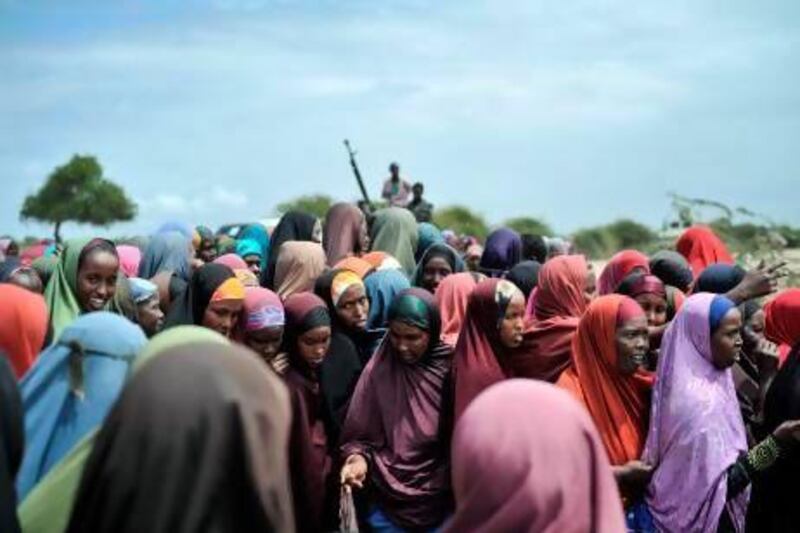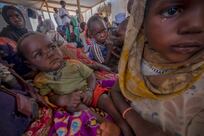ABU DHABI // Millions of dirhams have been spent by the Emirates Red Crescent on food packages for African countries this Ramadan.
Somalia was the most recent recipient, with a few hundred parcels given to displaced persons.
The Red Crescent was also active this year in Senegal, Cape Verde, Uganda, Tanzania, South Africa, Djibouti, Guinea, Sierra Leone, Gambia, Benin, Kenya, Mauritania and Nigeria.
Eid clothes, iftar meals and zakat Al Fitr programmes were also launched.
The greatest amount of aid went to Sudan, where Dh2.7 million was spent on food packages for displaced persons.
The Red Crescent was unable to break down expenses but said Dh21.6m in aid had been dedicated to Ramadan projects in 53 countries, of which more than Dh9m was spent – on iftar meals (Dh5m), zakat Al Fitr programmes (Dh3m), and new clothes for Eid (Dh1.2m).
Aid is dedicated to Africa every year, officials said.
According to the most recent statistics, released by the UAE Office for Coordination of Foreign Aid, UAE donors distributed Dh465.3m in 2011 towards humanitarian, development and charitable programmes to 41 countries in Sub-Saharan Africa. Of this, Dh84.16m was from the Red Crescent.
In Sudan, which in July last year was split into two separate countries – the Republic of Sudan and the Republic of South Sudan – the Red Crescent used Dh10.3m for projects including building schools, sponsoring orphans, emergency relief and providing medical equipment for children with disabilities.
Drought in Somalia has resulted in the world’s most severe food crisis of recent years with more than 10 million people in need of assistance. The Red Crescent, along with the Mohammed bin Rashid Establishment and Sharjah Association, conducted a television and radio campaign seeking aid for famine victims.
Total UAE aid was Dh58.6m but the Red Crescent alone provided Dh27.1m, establishing two nutritional centres in Mogadishu, supplying water and shelters to internally displaced persons, digging water wells and shipping and distributing food.
In November 2011, the Red Crescent, along with United Nations agencies, launched a programme to help 3,000 displaced persons return home, providing every family with rations worth US$400 (Dh1,469) to help them get through three months.
After that, the Red Crescent continued to support Somalia, providing Dh8.7m towards health programmes for mothers and children and sponsoring 3,893 orphans.
“In 2011, the Red Crescent mounted a number of relief operations in response to humanitarian emergencies,” the Office for the Coordination of Foreign Aid stated.
“Of these, the largest and most complex was the operation to assist victims of the devastating famine in Somalia.”
In November 2011, Kenya also suffered from a food crisis. The Red Crescent, along with the Sharjah Charity Association, provided relief operations there worth Dh3.3m.
In Ghana, Dh4.4m was set for sponsoring orphans, promoting education, building schools, providing medical services and digging water wells.
In Mauritania, the Red Crescent sponsored more than 1,500 orphans and in Niger, Dh5.6m from the Red Crescent and Sharjah Charity Association was used to build mosques.
About Dh4m was sent to Senegal to support Haj pilgrims, build and furnish mosques, and provide Eid clothes and iftar meals during Ramadan.






